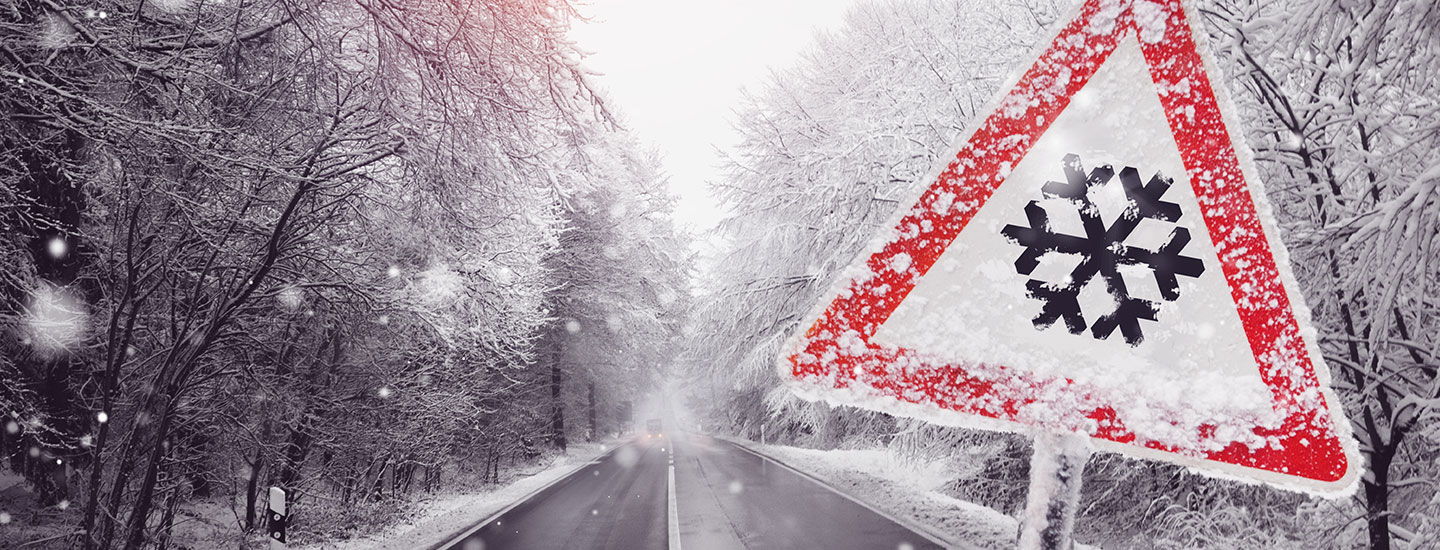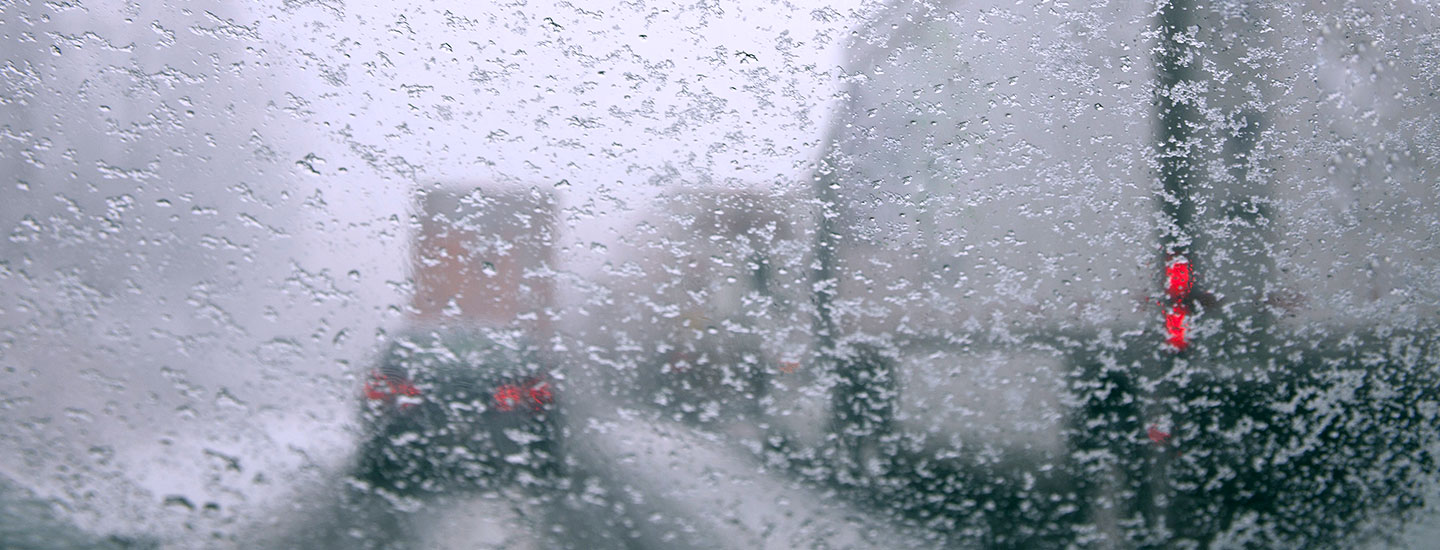December 28, 2018

Winter is Here: Be Prepared
By Rick Tapp, PACCAR Leasing Maintenance Manager
The longest days of the year are here. And so are the toughest driving conditions – brought to you by inclement and below freezing weather. According to the Federal Highway Administration, 70 percent of the United States’ roads are located in snowy regions (defined as receiving five inches or more of snow per year). And, in Canada, severe weather can be the norm during winter months. The FHA reports that in the U.S., on average, 1,300 people are killed and more than 116,000 injured in vehicle crashes on snowy, slushy or icy pavement. That’s despite the U.S. spending more than $2.3 billion a year on snow and ice control annually.
Are your drivers and trucks ready for the elements? Here are my top tips to keep your drivers and trucks running safely.
Safety First: Winter prep should include safety and emergency tools should your truck hit extreme weather and be shut down due to road closures. That means extra food and water, blankets, snow gear (for both your driver and truck) and flashlights. While your driver might not need all those safety items, it’s good to have in case others are in need of help.
Greased 5th Wheel: Your day can come to an end before it gets started if your 5th wheel isn’t clean and properly greased. In cold weather it’s especially important to pay attention to your 5th wheel since roads can be slippery. If your 5th wheel is not moving freely, it takes more pressure to make your kingpin turn. This can compromise your turning and keep you moving straight ahead, versus making a corner. Proper lubrication can keep that from happening.
Batteries: When it comes to preparing your trucks for winter, the top concern is having power to start your truck. When extreme cold hits, it reduces the cranking power. And, it takes much longer to recharge batteries once they’re cold – sometimes the charge acceptance on an AGM battery is as low as 2 amps per hour. You should test and ensure batteries are fully charged and load tested for winter months. Plus, you should check to ensure connections are clean and fully tightened.
Fuel and Anti-Jelling Products: Biodiesel is more prone to cold fuel filter plugging than diesel. Depending on the base stock, this can occur at temperatures as high as 50F/10C. Diesel fuel is usually blended for the area it is sold in, so, that means fuel sold in the Southern states will jell sooner than Northern fuel in dropping temperatures. Additional solutions are generally required as temperatures drop below 15F/-9C. This could be the use of fuel line heaters, additives or blended fuel. Remember, fuel additives must be mixed prior to exposure to the cold. Fuel additives may work for diesel only, bio diesel only, or for both. Don’t guess – additives are not all the same. Major truck stops will be able to tell you which is the best to buy, plus if you’re buying biodiesel, they’ll be able to tell you the content of the fuel you’re purchasing.
Note: if blending with kerosene, low sulfur kerosene must be used. High sulfur kerosene can damage aftertreatment components. (ASTM D675 must be complied with.)
Fuel Filters and Water Separators: Fuel filters and water separators protect your engine from contaminants and water. And, in winter, there is another element coming into play – condensation from a warm fuel tank when the outside temps are cold. So, both need to be checked frequently.
Tires and Brakes: When it comes to winter driving, nothing is more important than traction. If you’re running predominantly in the Northern states, or in Canada, some fleets switch to a more aggressive tread in winter months – warehousing their more fuel efficient tires for use later. Other fleets will go with a more aggressive tread year round. For those running all purpose tread, it’s vital to keep tabs on tread depth. Change out your tires on the side of caution – perhaps move your steer or drive tires to your trailer position, or retread your drives ahead of schedule to ensure maximum tread depth. Here’s a sobering fact: In 2017 there were 738 fatalities in tire-related crashes (both car and truck).
When it comes to drum brakes, they can freeze. (Disc brakes don’t.) When you start off your day, drive slowly to ensure your wheels are turning. It can be a bigger problem with trailers – especially those that have been sitting. In some cases, you might need a hammer to tap free the ice from the drum. If you’re not paying attention and drive off with locked drums you will flat spot your tires.

Wipers and Wiper Fluids: In the winter, look for replacement blades designed for winter use. Some will be marked with a snowflake on the package. This signifies the wiper is more robust and able to deal with snow and ice. What’s more, don’t think all wiper fluid is the same. In the South, the fluids are made with less de-icing solution than in the North. A good rule of thumb is to buy the fluid in the coldest territory you plan to travel in. Also, keep in mind, not only does a clean windshield mean better visibility for your driver, it also means if you have forward-looking safety technologies, it will work better too!
Stationary Re-Gens: Your emission system and re-gens require heat. And, that can be a problem in the winter. Chances are you’ll be traveling slower, and stopping more frequently. That means your re-gen light could come on more frequently. You need to be vigilant about clearing the soot through a stationary re-gen.
Taillights: In the old days, taillights emitted enough heat to keep the lenses snow and ice free. Today’s LED bulbs can be ordered with a heating element in the housing to do the same thing. But, if you don’t have those heating elements, ice can build up. You need to be diligent about cleaning the taillights and marker lights to ensure you’re seen by other motorists.
Leaks and Ice Build-Up: It’s more important than ever to have your drivers do thorough pre- and post trip inspections. They need to look for any leaks – especially when it comes to the cooling system; anti-freeze levels need to be at their prescribed level. What’s more, ice and snow can accumulate. If ice forms on wiring or hoses, the added weight can pull connections loose. And if you run an APU, check to make sure ice buildup and snow are not blocking your exhaust or your intake systems.
Stay Clean: It’s hard to keep your rig looking nice in the winter with all the dirt and snow around. But there is another element on the road that is playing havoc with your undercarriage – and that’s salt and de-icing fluids you pick up from the road. The only way to safeguard your truck from those corrosive elements is to run your rig through a truck wash. You’ll be thankful you did down the road.

